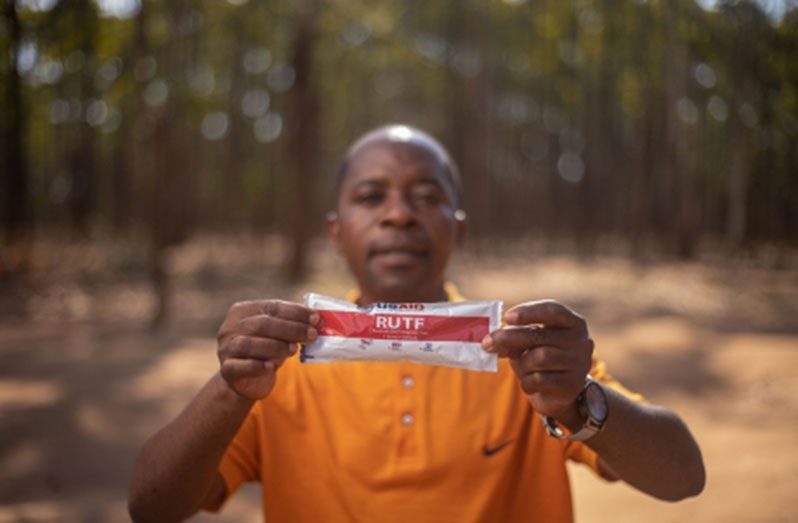–new Codex Alimentarius guideline means ready-to-use therapeutic foods can be manufactured and incorporated into more countries’ health plans
HOW do you name or categorise life-saving goo? Is it a food? Is it a medicine? It can come in the form of a dense, energy- and nutrient-rich paste or a more solid bar. It is meant for children aged between six and 59 months suffering from severe acute malnutrition (SAM).
Just one carton of these vital products, administered by a community health professional – together with the right health care – can transform a malnourished child into a healthy one in just four-six weeks. The name Ready-to-Use Therapeutic Food (RUTF) already hints at the difficulty of categorising it.
Why categorise it at all you may ask? Well, it is a needed step in ensuring the product is made safely and contains the vital nutrients. But also, you can’t use what you can’t define.
That’s why, following a request by the United Nations Children’s Fund (UNICEF), the adoption by the Codex Alimentarius Commission of a new guideline on RUTFs is an important breakthrough. While at first sight it might seem technical or obscure, the move by Codex Alimentarius, the joint FAO – World Health Organization (WHO) food standards programme, is a vital first step in paving the way for national governments to integrate RUTF into their health systems.
The product is currently manufactured in around 20 countries. But one obstacle to expanding production more widely has been that it doesn’t fit easily into existing categories, so it hasn’t had specific standards set.
“The new Codex guideline provides an official reference for national governments to use in their policies for nutritional treatment of severe acute malnutrition in children,” says Maria Xipsiti, FAO Nutrition Officer.
“This is not a medicine and it’s not a bag of beans or bag of wheat but rather a medical food. It was not clear to national governments how they would regulate this product because it didn’t really fit within their food or medicine portfolios,” says UNICEF Nutrition Specialist, Alison Fleet.
All this has meant that even if donors such as United States Agency for International Development (USAID) are ready with increased support, there’s only been enough supply to allow humanitarian agencies to reach about a quarter of the children affected by SAM.
Meanwhile, the multiple shocks of inflation, climate change, drought and flooding have seen the numbers of wasted children in some countries increase by 40 per cent since 2016. Putting the remaining piece of the jigsaw in place by creating conditions for wider production of RUTF is a key reason behind UNICEF’s request for Codex intervention.
The Codex guideline covers everything from nutritional composition, additives and labelling requirements, with proper provisions for safety on such issues as potential bacterial contamination.
But what it does not do is stipulate that the food be made from a particular ingredient such as peanuts. It can be made of cereals, seeds, legumes or anything available locally and to suit countries’ particular local ingredients or taste, as long as it meets the nutritional safety and scientific guidelines.
With this in place, UNICEF and WHO plan to submit the product for countries to use as part of a model essential medicine list.
Jaden Bendabenda, WHO Technical Officer, explains: “WHO is happy to see that Codex has now developed the guideline on RUTF, which provides clear standards for such therapeutic foods, as this will facilitate ongoing discussions on including RUTF in the essential medicine list. This could improve access of RUTF for the treatment of SAM at the country level.”
The production of RUTF for UNICEF is currently 67 per cent sourced locally from the countries where RUTFs are used. The standard setting process was driven by South Africa, which is already a supplier, with support from Uganda and Senegal. UNICEF provided technical guidance during the standard development process. A number of other developing countries have expressed interest in potentially producing RUTF following the adoption of the guideline.
As global food insecurity worsens, with regions such as the Horn of Africa and the Sahel especially badly hit, the hope is that an increase in production will be able to contribute to narrowing the gap between supply and demand to help some of the most vulnerable children on our planet. (FAO)












